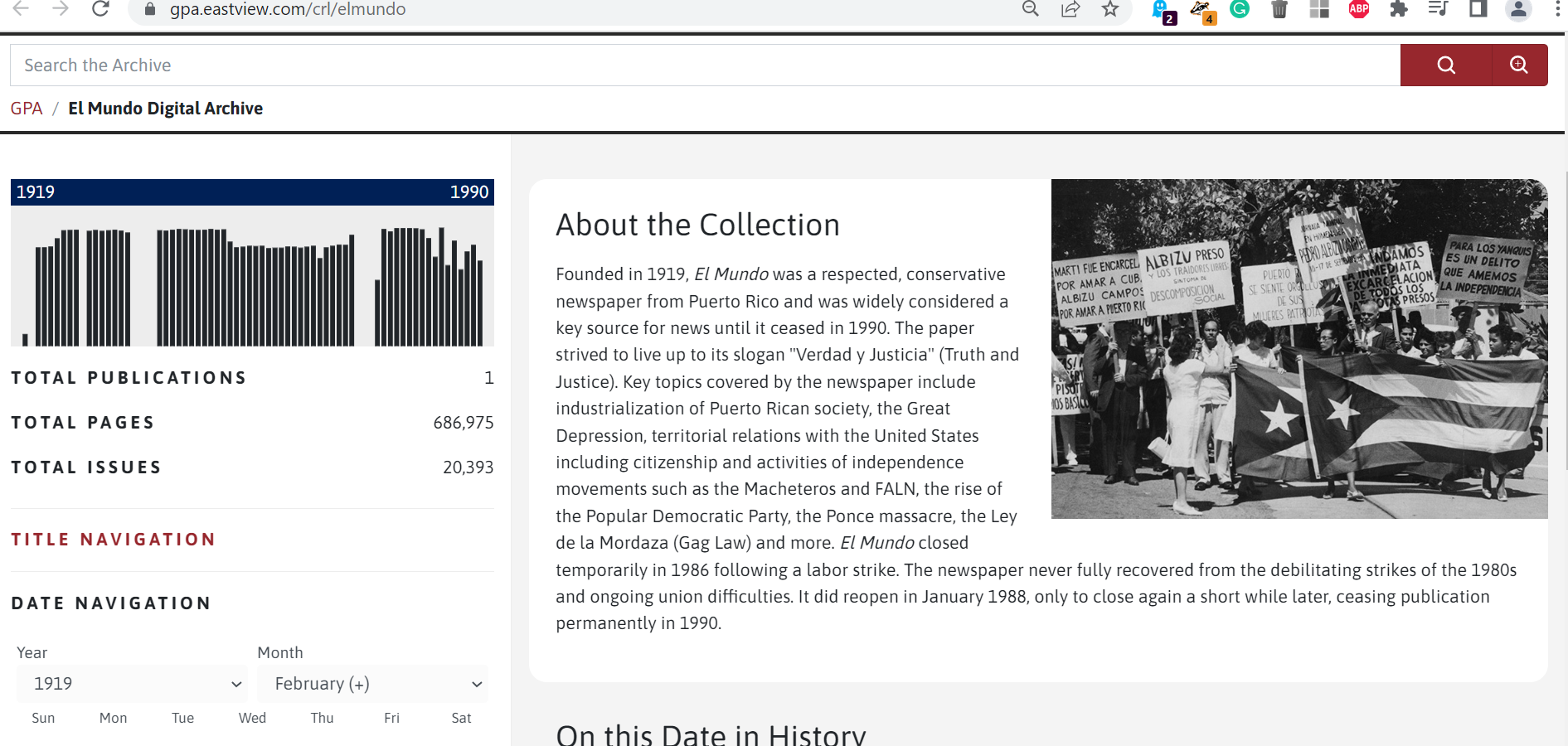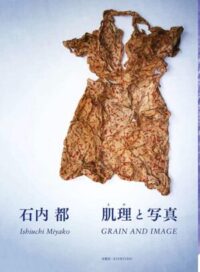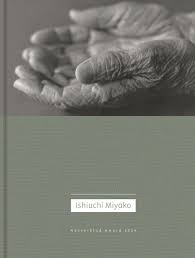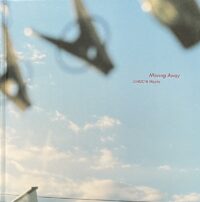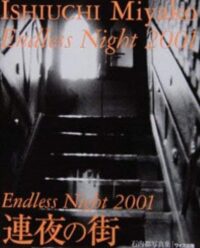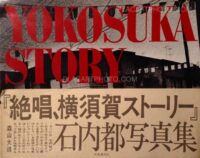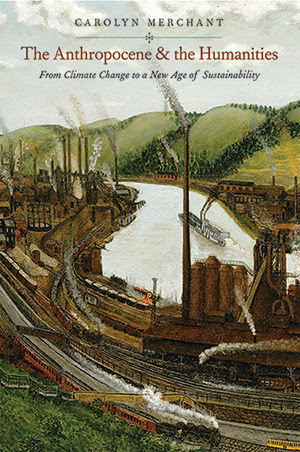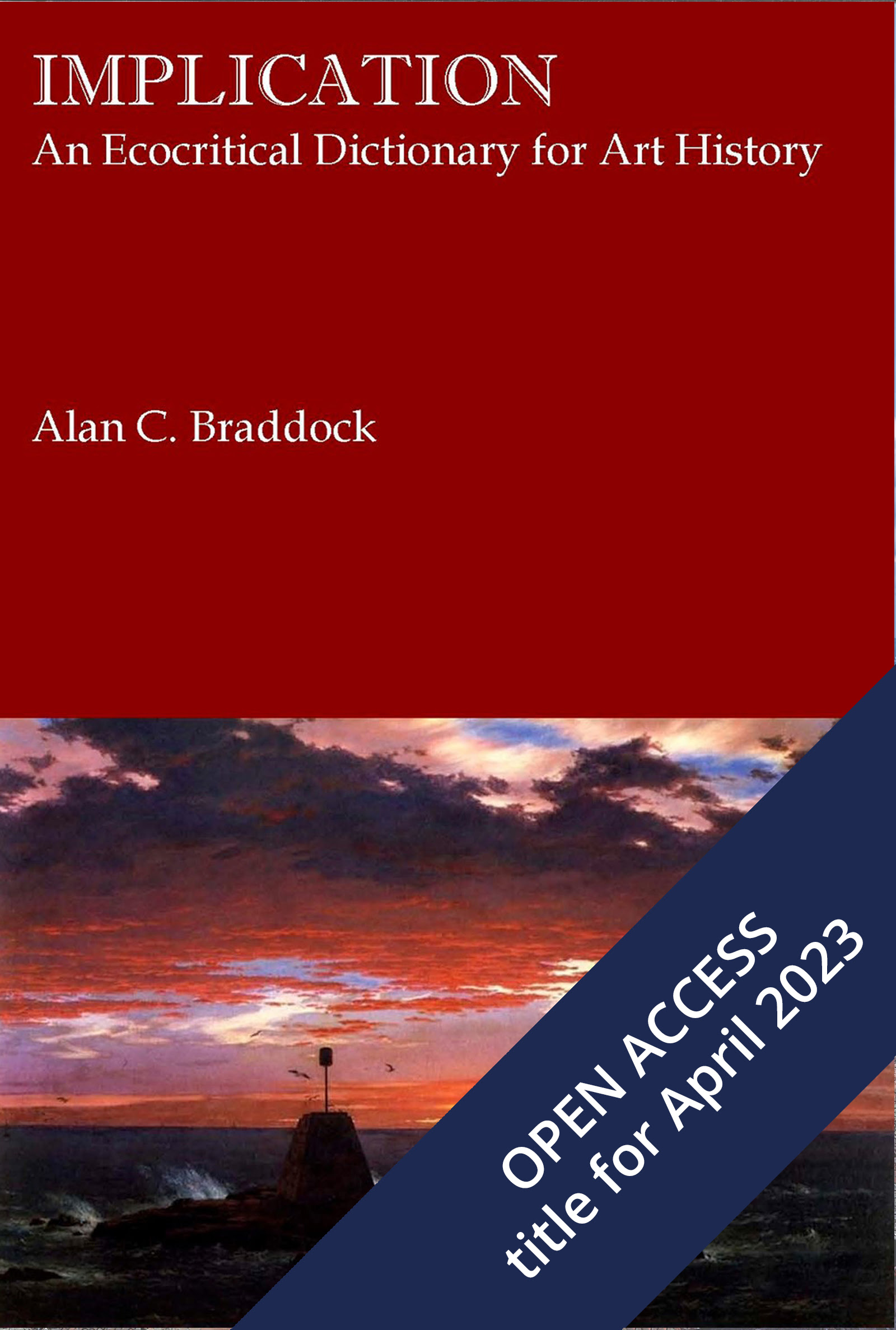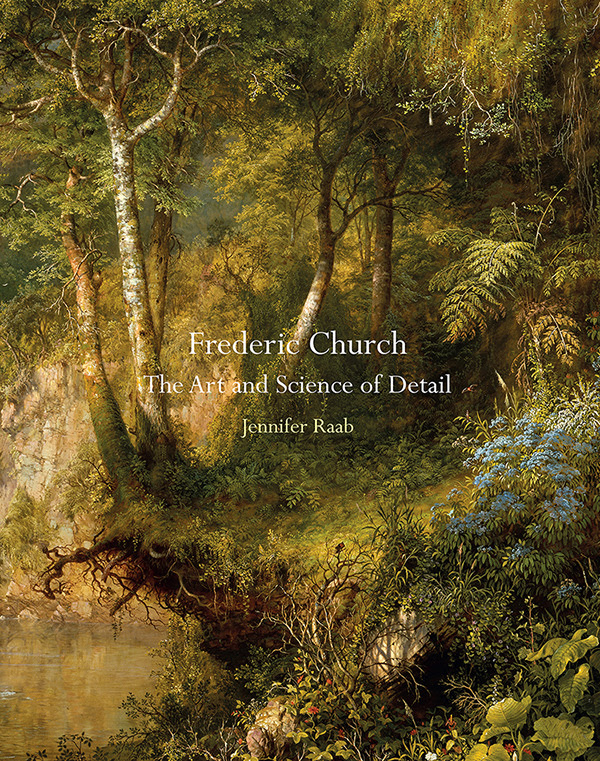Uncategorized
Bancroft Quarterly Processing News
The archivists of The Bancroft Library are pleased to announce that in the past quarter (April-June 2023) we have opened the following Bancroft archival collections to researchers.
Western Americana collections:
The role of women in the Black movement conference materials (processed by Marjorie Bryer)
Jonathan Winters collection on campus and East Bay LGBT activism (processed by Marjorie Bryer)
Edward Miyakawa papers (processed by Marjorie Bryer)
YMCA of San Francisco, Chinatown branch records, approximately 1915-2010 (processed by Marjorie Bryer)
Nan Tucker McEvoy collection (processed by Jaime Henderson and Marjorie Bryer)
Joni Jacobs collection of mayoral campaign materials (processed by Lara Michels)
Louise Taber family papers (processed by Lara Michels and student processing assistant Malayna Chang)
Central American Labor Defense Network records (processed by Marjorie Bryer)
Elaine Dorfman papers and oral histories (processed by Presley Hubschmitt)
Oakland-Piedmont Jewish Community Center records (processed by Presley Hubschmitt)
B’nai B’rith, San Francisco Lodge No. 21 records (processed by Presley Hubschmitt)
Rosene Family papers (processed by Lara Michels)
Women’s American ORT, San Francisco Chapter records (processed by Presley Hubschmitt)
Jerome H. Bayer papers (processed by Presley Hubschmitt)
Keesling family collection of John Henry Barbat correspondence, photographs, and realia (processed by Lara Michels)
Joel Bolster correspondence, 1851-1852 (processed by Lara Michels)
Harold Dobbs scrapbooks and photo albums (additional processing and finding aid written by Lara Michels)
Keesling family collection of Stebbins family papers (processed by Lara Michels)
William R. Sanford and Charles T. Forbes correspondence and sketches related to Native American archaeology, Owens Valley, California (processed by Lara Michels)
Presbyterian Church in Chinatown, San Francisco, additions (2019-08-16) (processed by Lara Michels)
Sierra Club mountain registers and records, 1860-2005, additions (processed by Lara Michels)
Robert (Bob) Edward Rooker rodeo archive (processed by Jaime Henderson)
Warren Hinkle papers (digital files) (processed by Christina V. Fidler)
Vivian Low collection of materials on the Military Intelligence Service Language School, Chinese Division, 1945-2017 (digital files) (processed by Christina V. Fidler)
Judith Heumann papers (digital files) (processed by Christina V. Fidler)
Literary and Arts collections:
Anne S. Perlman papers (processed by Marjorie Bryer)
Robert D. Brotherson collection of the Activist Group of Poets (processed by Marjorie Bryer)
Nancy Karp + Dancers records (processed by Jaime Henderson and Lara Michels)
Claire Van Vliet letters to Frederick W. Hegeman, 1977-1988 (processed by Lara Michels)
Kenneth Perkins papers (processed by Randal Brandt and Sterling Kinnell)
University Archives and Faculty Papers collections:
University of California, Berkeley, Department of Women’s Intercollegiate Athletics records (processed by Jessica Tai)
Harold Biswell papers (processed by Jessica Tai)
Joseph L. Sax papers (processed by Lara Michels)
Robert Tracy papers (processed by Michele Morgan and Lara Michels)
Jaroslav Joseph Polivka papers (processed by Lara Michels)
Lawrence Levine paper (digital files) (processed by Christina V. Fidler)
Jacqueline Ellen Violette de La Harpe papers (additions) (processed by Marjorie Bryer)
Pictorial collections:
Acción Latina and El Tecolote pictorial archive photographic print and poster collection (processed by Isabel Breskin with James Eason)
Fakir Musafar archive (processed by Lori Hines)
John S. Service photograph collection (processed by Isabel Breskin with James Eason)
Photographs from the Noël Sullivan papers (1 unprocessed box)
185 small pictorial collections and single items.
Collections currently in process include:
- The papers of George Barlow, UC Berkeley ichthyologist, ethologist and evolutionary biologist (processing work by Jessica Tai)
- The papers of Michael Paul Rogin, UC Berkeley political scientist notable for his critique of American imperialism (processing work by Marjorie Bryer)
- University of California, Berkeley, American Cultures Center records (processing work by Jessica Tai)
- Western Jewish History Center records (processing work by Presley Hubschmitt)
- Acción Latina records (processing work by Marjorie Bryer)
- Haas-Bransten-Rothman family papers (processing work by Presley Hubschmitt)
The Surprising Ink Recipe of an Ancient Scribe
By Leah Packard-Grams
Ancient History & Mediterranean Archaeology PhD student
Center for the Tebtunis Papyri
Writers in the modern world often have a favorite pen, a preferred color of ink, or quirky handwriting, and ancient writers were no different! Scribal habits are a topic of increasing interest among scholars who study the ancient Mediterranean, and UC Berkeley’s papyrus collection is full of possibilities for the topic that has set researchers abuzz.
UC Berkeley’s collection of papyri, housed in the Center for the Tebtunis Papyri (CTP) on the fourth floor of The Bancroft Library, was excavated from the sands of Egypt 123 years ago, but it has often been remarked that the collection is rich enough to provide work for generations of scholars. The papyri provide crucial insights for our knowledge of daily life in Egypt and can illuminate individual priests, artisans, and scribes in extraordinary detail. One specific group of papyri caught my attention when CTP Director Todd Hickey mentioned it in a graduate course a few years ago: the archive of a scribe who worked for a local record-office in the 70-60s BCE. Since his name has not yet been deciphered from the surviving papyri, scholars refer to him as “Scribe X”. His papyri were found in the crocodile mummies excavated in Tebtunis, Egypt, on behalf of UC Berkeley over a century ago.
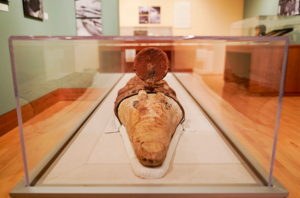
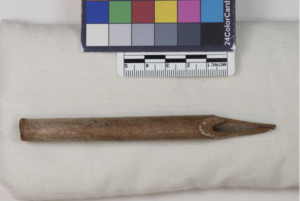
1. (Left: A crocodile mummy on display in the Object Lessons exhibit, Spring 2020. Right: a reed pen from Tebtunis held in the Hearst Museum at UC Berkeley, object no. 6-21420.)
The Scribe X papyri have been examined by several scholars, and two of them have been published in full, while dozens of fragments remain to be edited.1 Previous researchers have found this archive to be unique: It not only represents the oldest collection of documents from a village record-office (grapheion in Greek), it also displays the earliest use of the reed pen (kalamos in Greek) to write the Demotic Egyptian script, which was traditionally written with a rush. The Egyptian scribes of this era did not use the reed pen for Demotic so far as we know, and it would be decades before the reed was used with regularity for the Demotic script. In other words, Scribe X had a favorite pen, and he used it even though it differentiated him from the other scribes around him. This prompted a question: If the scribe used an “atypical” writing instrument, was the ink he used likewise “atypical”?
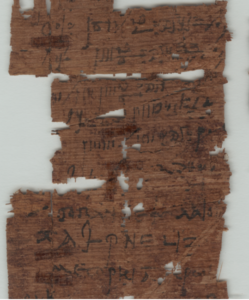
2. (A selection of lines from Scribe X’s account papyrus P.Tebt.UC 2489, displaying Demotic and Greek written on the same document, both written with the reed pen.)
Previous studies by a team of researchers in Europe have proved that there was a shift when scribes began to add copper sulfate to ancient inks of this period in the region of Tebtunis.2 This was a development from the earlier Egyptian ink recipe of gum arabic, soot, and water. In later periods, metallic elements such as lead and copper were intentionally added to the ink to make it more durable. Did this innovative scribe use a more recent ink recipe, or the traditional gum-soot-water recipe?
To find out, a chemical analysis using X-ray fluorescence spectrometry (XRF) was conducted in collaboration with UC Berkeley’s Archaeological Research Facility. One reason scholars favor the use of XRF for testing ancient objects is because it is nondestructive and extremely safe. A portable XRF spectrometer from the Archaeological Research Facility was brought to the Center for Tebtunis Papyri, where Dr Jesse Obert (a recent PhD from the Graduate Group in Ancient History and Mediterranean Archaeology) and I scanned multiple papyri from the Scribe X archive. The XRF spectrometer contains both an x-ray emitter with a precise 5 mm beam as well as a detector which identifies photons that are ejected from the atom when it is exposed to the x-rays. Different elements emit different photon signatures, and the detector “reads” the photon signatures to identify which elements are present in the atoms of the scanned area. We selected nine areas on one bilingual papyrus for scanning and included a number of uninscribed areas on the papyrus as a control. Several other papyrus fragments from the archive were also scanned in subsequent months.
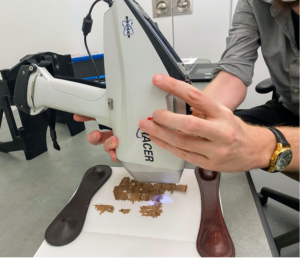
3. (Dr Jesse Obert performing the initial scan with the portable XRF)
The results of the scans were surprising: The machine did not detect any metallic elements in the ink whatsoever. From this information, we can infer that Scribe X used the traditional ink recipe without any of the ink additives that were popular in the era! Such a finding was unforeseen because studies of comparable papyri did not attest to the use of this ink. At the same time, however, it is somewhat un-surprising, because it is well known that Ancient Egyptian traditions in art, religion, language, and culture endured even beyond Alexander the Great’s conquest of Egypt in 332 BCE. What this project has proven is that this ancient ink recipe was one of these enduring traditions, holding on longer than previously thought in the area of Tebtunis.
In April 2023, I presented this study in a poster for the annual meeting of the American Research Center in Egypt and received first place in the “Best Student Poster Competition.”3 More research on the archive is forthcoming (stay tuned for an upcoming feature in the Fall 2023 issue of Fiat Lux!). The project inspired me to get my own certification in XRF scanning, and my work with the archive has allowed me to become familiar with this scribe, his quirks, and his writing habits. The project and the prestigious award it has received are testaments to the open, collaborative attitude of UC Berkeley researchers working across disciplines and across the many research facilities and hubs across campus. I am extremely grateful to Dr Todd Hickey, Dr Jesse Obert, Dr Nicholas Tripcevich, and Directors of The Bancroft Library Charles Faulhaber and Kate Donovan, whose support and encouragement has enabled this project to come to fruition!
Notes
- The two papyri published thus far are edited by Parker 1972 and Muhs & Dieleman 2006. For assessment of the Demotic material, see Muhs 2009 and 2010. The Greek material was surveyed in Hoogendijk 2013.
- See the XRF ink study in Christiansen et al., 2017.
- See Packard-Grams 2023.
Sources
Christiansen, Thomas, et al. “Chemical Characterization of Black and Red Inks Inscribed on Ancient Egyptian Papyri: The Tebtunis Temple Library.” JAS Reports 17, 2017, pp. 208-219.
Hoogendijk, Francisca A.J.. “Greek Contracts Belonging to the Late Ptolemaic Tebtynis grapheion Archive?” in Das Fayyûm in Hellenismus und Kaiserzeit: Fallstudien zu multikulturellem Leben in der Antike, Carolin Arlt, Martin Andreas Stadler, and Ulrike Weinmann, eds., Wiesbaden: Harrassowitz Verlag, 2013, pp. 63-74.
Muhs, Brian. “The Berkeley Tebtunis Grapheion Archive,” in Actes du IXe Congrès des études démotiques, G. Widmer and D. Devauchelle, eds. BiEtud. 147. Cairo, 2009, pp. 243-252.
Muhs, Brian. “A Late Ptolemaic grapheion Archive in Berkeley,” in Proceedings of the Twenty-Fifth International Congress of Papyrology, Ann Arbor, 2007. American Studies in Papyrology, Ann Arbor, 2010, pp. 581-588.
Muhs, Brian, and Jacco Dieleman. “A Bilingual Account from Late Ptolemaic Tebtunis.” Zeitschrift für Ägyptische Sprache und Altertumskunde, vol. 133, 2006, pp. 56-65.
Packard-Grams, L. . “New Pen & Old Ink: XRF Analysis of a Unique Archive from 1st c. BCE Tebtunis,” X-Ray Fluorescence Reports: Archaeological Research Facility: UC Berkeley eScholarship Publications. 2023. https://escholarship.org/uc/item/25n2k5bn
Parker, R.A. “An Abstract of a Loan in Demotic from the Fayum.” Revue d’Égyptologie 24, 1972, pp. 129-136.
PhiloBiblon 2023 n. 5 (julio): Los Lucidarios de Sancho IV y otros manuscritos hispánicos de interés
Mario Cossío Olavide
Universidad de Salamanca/IEMYRhd
University of Minnesota/Center for Premodern Studies
Los Lucidarios
Cuando el célebre inspector de bibliotecas Henri Omont realizó el catálogo de los fondos de las bibliotecas públicas de Rouen, anotó que el manuscrito A283 de la Bibliothèque municipale –hoy Bibliothèque patrimoniale François Villon–, era un texto castellano del siglo XV al que le faltaba el título y que comenzaba en medio de la tabla de rúbricas. Tras la tabla, seguía el contenido de la obra, cuyas primeras líneas copió fielmente: “Maestro, yo soy tu discípulo e tú me as enseñado muy bien” (Catalogue générale, 184). El texto corresponde con el inicio del marco narrativo del Lucidario (BETA texid 1242).
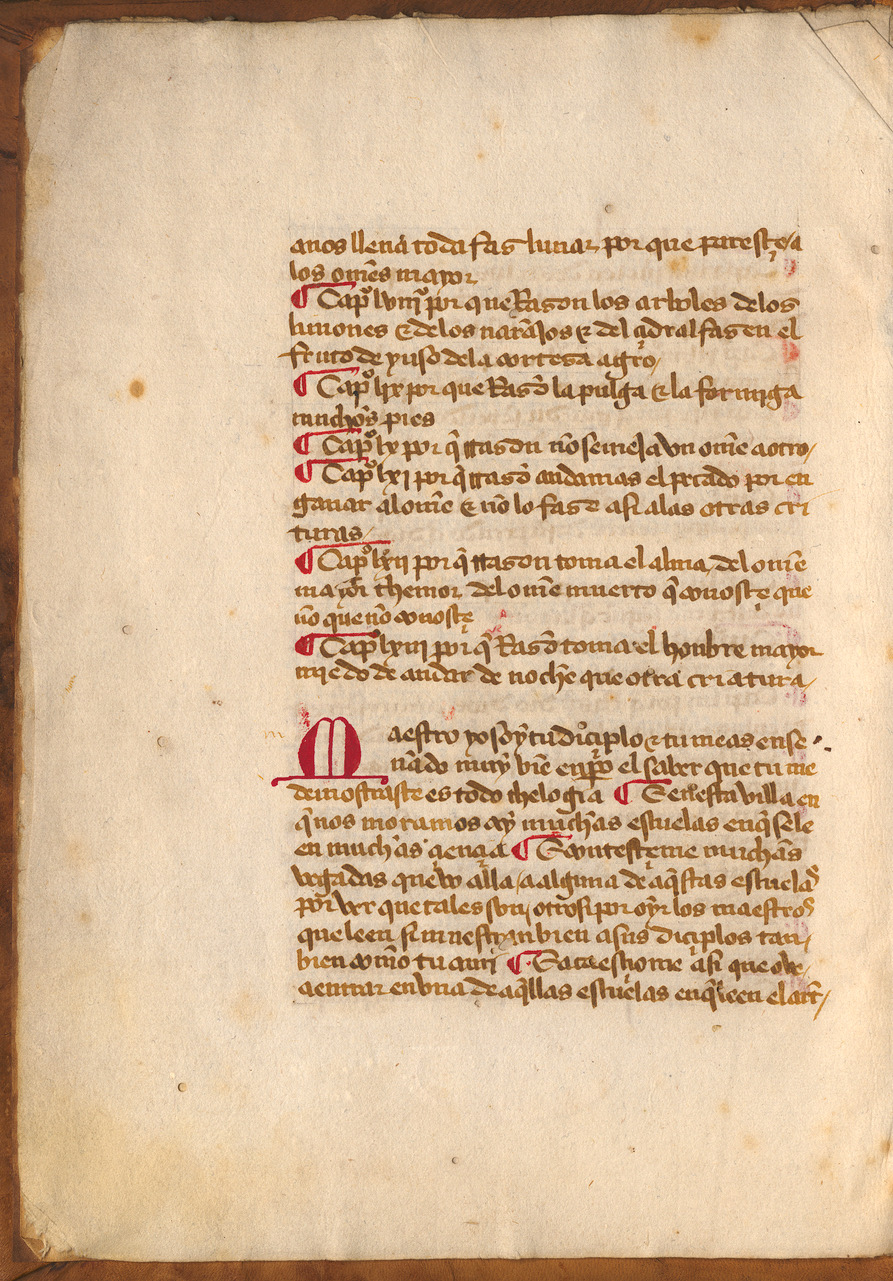
Imagen 1. Rouen: Bibliothèque municipale, Ms A283, f. 2v
El manuscrito transmite el octavo testimonio conocido de esta obra auspiciada por Sancho IV, al que le he dado la sigla H (BETA manid 6360). Se trata de una copia posiblemente realizada en los talleres napolitanos de los reyes de Aragón y que llegó a Rouen gracias a la compra de manuscritos de Federico I de Nápoles realizada por el cardenal Georges d’Amboise durante el exilio del monarca en Tours (para una descripción completa de su contenido, véase Cossío Olavide, “Un nuevo manuscrito”).
A H hay que sumarle un noveno testimonio, I (BETA manid 3067), que identifiqué hace unas semanas. La existencia de este texto también pasó desapercibida por mucho tiempo. Se encontraba en la Biblioteca Ducal de Medinaceli y de él había dado cuenta Antonio Paz y Meliá con una enigmática nota en su parcial catálogo del fondo, entre los “manuscritos curiosos”: “Libro del rey Sancho IV – Diálogo entre maestro y discípulo (Letra del siglo XV)” (Serie 2: 537). Entre todas las obras de Sancho IV, esta descripción solo puede ser aplicada al Lucidario. Después de la venta de la biblioteca en 1964, el manuscrito pasó a la colección de Bartolomé March en Madrid y, tras la muerte de este, fue trasladado, junto al resto de manuscritos, a la Biblioteca de la Fundación Bartolomé March de Palma (sobre este manuscrito, véase Cossío Olavide, “Un nuevo testimonio”).
Resulta interesante resaltar que se trata de un testimonio tardío del Lucidario, de mediados del siglo XVI por su letra y filigranas, mientras que el cuatrocientos acumula seis testimonios de la obra. Hay dos fechados, A (BNE MSS/3369 [BETA manid 1434]) de 1455 y C (Real Bibl. II/793 [BETA manid 1435]) de 1477. D, el códice Puñonrostro (RAE Ms. 15 [BETA manid 1424]), puede ser datado por sus filigranas entre 1450 y 1460 (Cossío Olavide, “D (RAE 15)”). G (RAH Cód. 101 [BETA manid 2285]) es de finales de siglo, mientras que H (Rouen BM A283 [BETA manid 6360]) es de mediados de la centuria.
El testimonio B (Salamanca BU Ms. 1958 [BETA manid 1433]) fue durante largo tiempo considerado de este siglo, pero sus filigranas y la letra empleada –muy similar a la cancilleresca– apuntan que fue producido entre 1380 y 1410. Esto es reconfirmado por una nota de compra-venta en los últimos folios, acompañada por las firmas de sus antiguos posesores, dos maestros salmantinos de las primeras décadas del siglo XV. Didacus Gundisalvi, Diego González, catedrático de derecho en la Universidad de Salamanca hacia 1433, y un Johanes Gundisalvi, locum tenentem archipresbiter, que bien podría ser Juan González de Segovia, catedrático de derecho canónico, teólogo y representante de Juan II en el Concilio de Basilea.
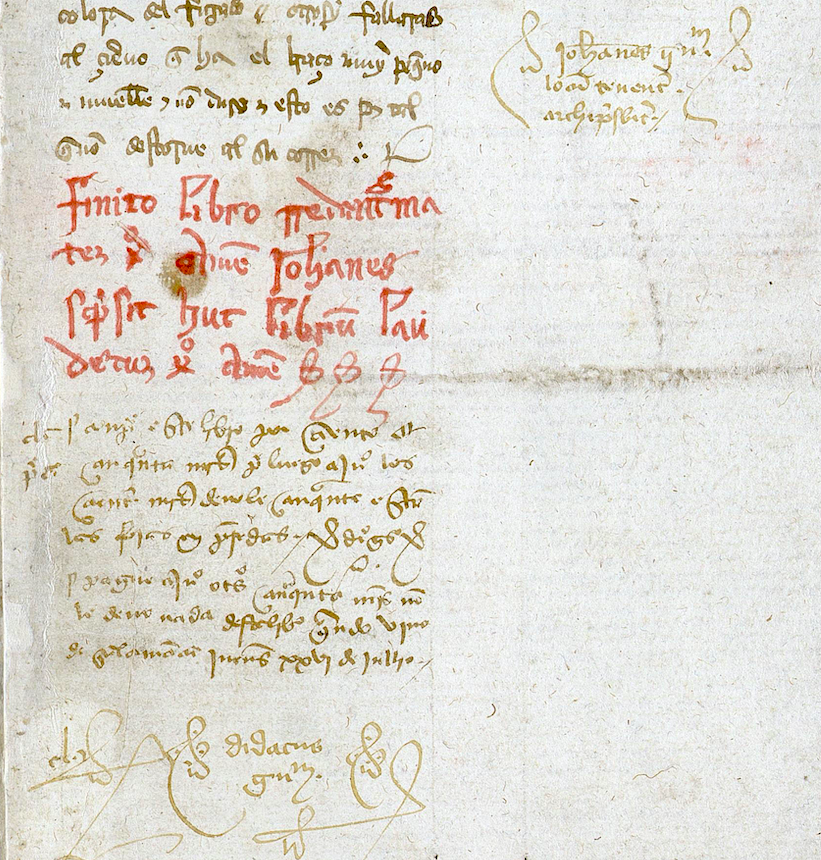
Manuscritos hispánicos en colecciones europeas
Un manuscrito recientemente redescubierto por Cossío Olavide y Romera Manzanares (“Nuevos testimonios”) es el Series Nova 12736 de la Biblioteca Nacional de Austria (BETA manid 6409), que transmite un testimonio parcial de la mal llamada Crónica del moro Rasis (BETA texid 1400) y de la Crónica sarracina (BETA texid 1462) de Pedro de Corral, datado entre 1460 y 1480.
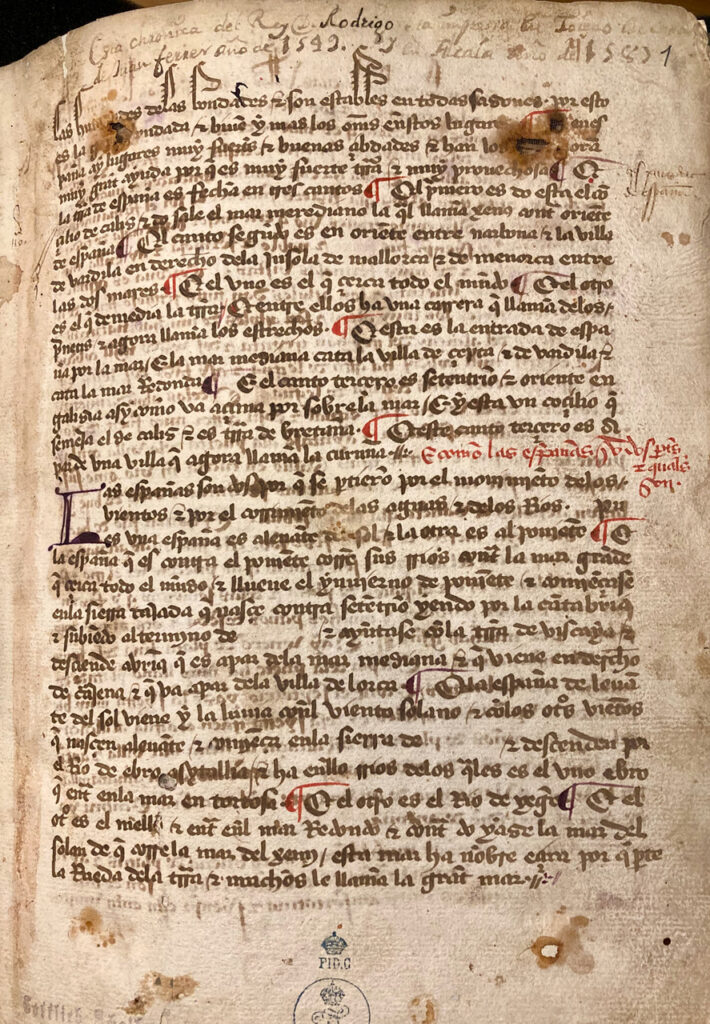
Además de estos textos, el manuscrito vienés transmite dos romances tempranos en el fol. 36r y la guarda pegada a la contratapa final: Virgilios y ¡Ay de mi Alhama! (o Paséabase el rey moro), según se dará cuenta en Cossío Olavide y Pichel (“Dos romances”).
Otro texto de interés es el ms. 9221 de la misma biblioteca, un manuscrito facticio con doble numeración que transmite un repertorio de inscripciones sepulcrales alemanas (fols. 1r-73r) y un breve texto latino de formato analístico sobre los reyes visigodos (fols. 1rbis-10rbis). Aunque se trata de una copia del siglo XIX, parece estar vinculado con el Cronicón de Cardeña.
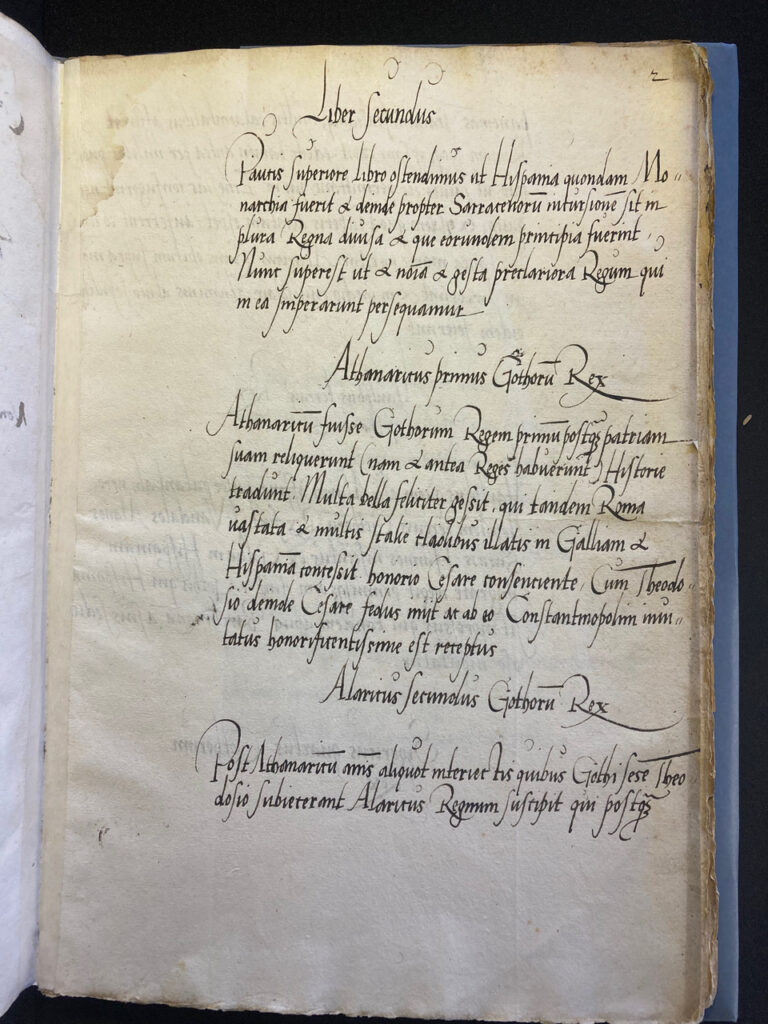
El manuscrito B702 de la Biblioteca Nacional de Suecia (BETA manid 4469) transmite la versión C del Fuero general de Navarra (BETA texid 1195), ampliado con disposiciones y textos legales añadidos, como el Amelloramiento de Philippe d’Evreux III (BETA texid 3192), estructura compartida por otros testimonios del fuero (BNE MSS/248 [BETA manid 1370] y MSS/ 6705 [BETA manid 3392], Biblioteca Regionale Universitaria di Catania ms. U009 [BETA manid 4600] y Real Biblioteca ms. II/1872 [BETA manid 3242]). Como estos, transmite en los fols. 114r-116v, una interpolación navarro-aragonesa del título de los retos del Fuero Real (libro 4, título 19), incorporada para cubrir un vacío legal en materia de justicia nobiliaria del Fuero general (véase Utrilla Utrilla, “Las interpolaciones” y Fradejas Rueda, “Una decepción”).
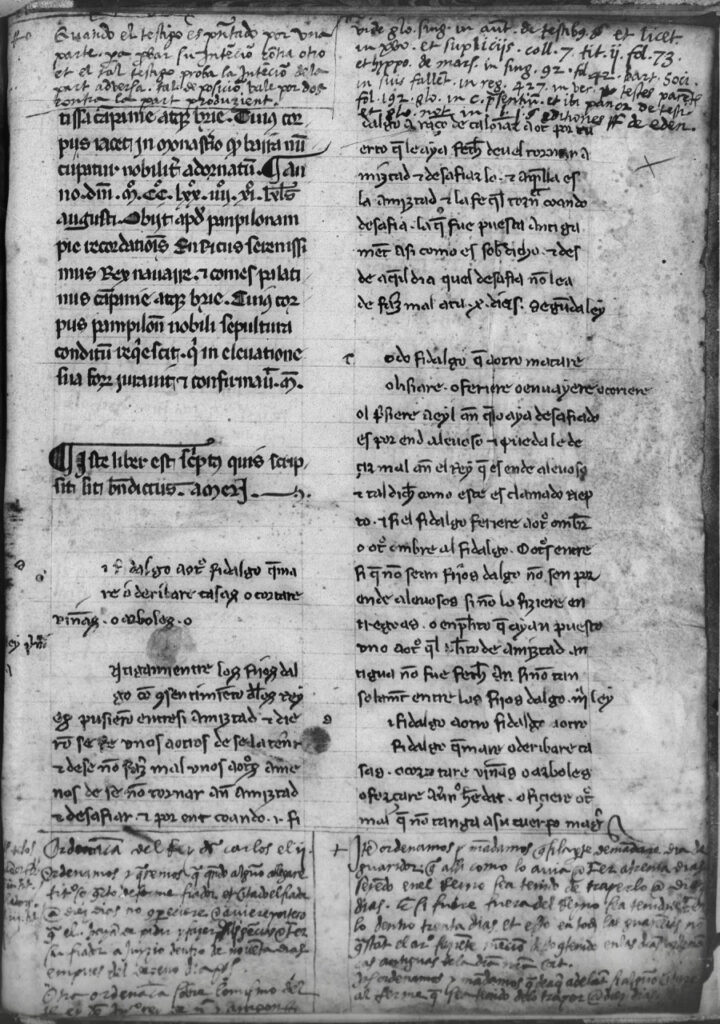
Referencias
Cossío Olavide, Mario y Ricardo Pichel. “Dos romances tempranos en un manuscrito historiográfico del siglo XV: ¡Ay de mi Alhama! y Virgilios (con una nota sobre la lectura del Amadís primitivo).” Actas del VIII Congreso Internacional de la Asociación Convivio, en prensa.
Cossío Olavide, Mario. “D (RAE 15).” Lucidarios. Editando el Lucidario de Sancho IV. 18/01/2023, https://lucidarios.hypotheses.org/testimonios/d
_____. “Un nuevo manuscrito (Rouen, Bibliothèque municipale Villon ms. A283) y una nueva edición del Lucidario de Sancho IV.” e-Spania, vol. 44, 2023. https://doi.org/10.4000/e-spania.46735
_____. “Un nuevo testimonio del Lucidario: I.” Lucidarios. Editando el Lucidario de Sancho IV. 26/05/2023, https://lucidarios.hypotheses.org/2807
Fradejas Rueda, José Manuel. “Una decepción y un hallazgo. Una nueva copia del Fuero de Navarra.” Las Siete Partidas del Rey Sabio: una aproximación desde la filología digital y material, editado por José Manuel Fradejas Rueda, Enrique Jerez y Ricardo Pichel, Iberoamericana, 2021, pp. 138-43. https://doi.org/10.31819/9783968691503-011
Omont, Henri, editor. Catalogue général de manuscrits des bibliothèques publiques de France. Départaments, t. I. Rouen, Imprimerie nationale, 1886.
Paz y Meliá, Antonio. Series de los más importantes documentos del Archivo y Biblioteca del Excelentísimo Señor Duque de Medinaceli. 2 vols. Imprenta alemana e Imprenta de Blass, 1915-1922.
Romera Manzanares, Ana y Mario Cossío Olavide. “Vieron el escrito y mostráronlo. Nuevos testimonios de la Crónica del moro Rasis y de la Crónica sarracina.” Revista de literatura medieval, vol. 34, 2022, pp. 249-68. https://doi.org/10.37536/RLM.2022.34.1.87619
Utrilla Utrilla, Juan. “Las interporlaciones sobre reptorios en los manuscritos del Fuero general de Navarra.” Prínicpe de Viana. Anejo, no. 2-3, 1986, pp. 765-76.
El Mundo Digital Archive (Puerto Rico): 1919-1990 [Open Access]
I am glad to report that the Center for Research Libraries, in collaboration with Eastview’s Global Press Archive platform, has released the full text of El Mundo newspaper published in Puerto Rico from 1919-1990.
Established in 1919, El Mundo was a well-respected and conservative newspaper hailing from Puerto Rico, widely acknowledged as a prominent news source until its cessation in 1990. The publication diligently aspired to uphold its motto of “Verdad y Justicia” (Truth and Justice). El Mundo extensively covered a range of significant topics, including the industrialization of Puerto Rican society, the impact of the Great Depression, territorial relations with the United States encompassing citizenship, activities of independence movements such as the Macheteros and FALN, the emergence of the Popular Democratic Party, the Ponce massacre, the enactment of the Ley de la Mordaza (Gag Law), and more. In 1986 El Mundo temporarily closed due to a labor strike, which inflicted lasting damage on the newspaper. Despite reopening in January 1988, the publication faced ongoing union difficulties and ceased operations permanently in 1990.
“Doris Sloan: Geologist, Educator, and Environmental Activist,” oral history release
New oral history: Doris Sloan
Video clip from Doris Sloan’s oral history on living in the Bay Area, on deep time, and on thinking like a geologist:
Doris Sloan is a geologist and paleontologist who earned her PhD at UC Berkeley and who taught, wrote, and engaged in environmental activism and education throughout the Bay Area, across California, and beyond. Sloan and I recorded nine hours of her then 92-year life history at her home in Berkeley, California, in May 2022. Our four recording sessions resulted in a 162-page oral history volume that includes an appendix of photographs with family as well as documents from her efforts in the early 1960s to stop PG&E’s construction of a nuclear power plant atop Bodega Head, under which runs the seismic San Andreas fault. Today, the coastal outcrop of Bodega Head is preserved as part of California’s scenic 17-mile-long Sonoma Coast State Park.
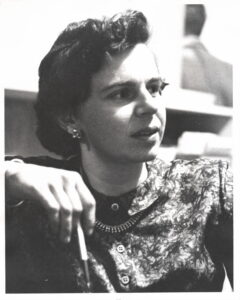
to Preserve Bodega Head and Harbor (NCAPBHH).
Sloan’s involvement in the “Battle for Bodega Head” helped inspire her later career as a geologist and teacher—a career she began by returning to graduate school as a mother in her early forties with children still at home. Sloan overcame numerous challenges, including gender discrimination in what were then male dominated departments and academic fields, to earn her MS in Geology in 1975 and her PhD in Paleontology in 1981. Her dissertation was an ecostratigraphic thesis on the sedimentary fossils of tiny creatures that once lived the San Francisco Bay. For many years, Sloan taught research-driven senior seminars in Environmental Science at UC Berkeley as well as geology courses for UC Extension. She lectured on travel excursions and field trips around California and across much of the Earth. Sloan became a board member with Save the Bay and a founding member of Citizens for East Shore Parks. In 2006, she published with UC Press the popular California natural history guide, Geology of the San Francisco Region. In her rich oral history, Sloan discussed all of the above, with details on her formative childhood experiences, her environmental and anti-nuclear activism, her experiences as a female geology graduate student at UC Berkeley, as well as her diverse teaching career.
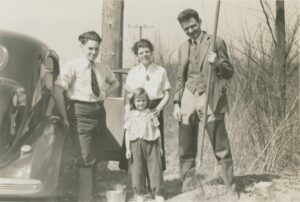
Doris Sloan was born in October 1930, in Freiburg, Germany. At age four, she and her family fled Germany after the Nazis removed her father, preeminent embryologist Viktor Hamburger, from the faculty at the University of Freiburg because of his Jewish ancestry. Her family settled in Missouri after her father secured a faculty appointment at Washington University in St. Louis. As a young girl, Sloan accompanied her father and his embryology students on field research trips to collect salamander eggs. She also shared fond memories of youthful summers working in Woods Hole on Cape Cod at the Marine Biological Laboratory. Sloan attended Bryn Mawr College from 1948 to 1951, where she began attending Quaker meetings. Upon her mother’s deteriorating health, Sloan returned to St. Louis and graduated in 1952 from Washington University with a BA in Sociology. In that same year Sloan moved to San Francisco, California, with her then-husband, with whom she had four children. In 1957, she and her young family moved to Sonoma County, where she was neighbors with Peanuts cartoonist Charles Schulz. It was there in Sonoma County where, in the interests of protecting her children from nuclear radiation and preserving the beauty of the Sonoma Coast, that Sloan began her environmental activism that would, among other experiences, inspire her later career as a geologist and teacher.
Video clip from Doris Sloan’s oral history about her role in the “Battle of Bodega Head, Part 1:
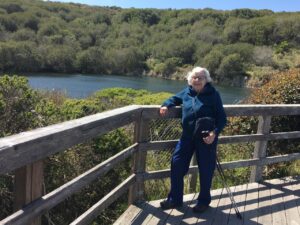
Sloan detailed her engagements in the multi-year “Battle of Bodega Head” that, in 1964, successfully stopped PG&E’s construction of a nuclear power plant on Bodega Head. After being told by an official from California’s Office of Atomic Energy Development and Radiation Protection to let go of concerns about the forthcoming nuclear plant and “leave it to the experts,” Sloan enlisted in the activist organization called the Northern California Association to Preserve Bodega Head and Harbor (NCAPBHH)—a name others created and she described as “dreamt up on a Friday night after too many beers.” The Association included an eclectic mix of anti-nuclear citizen activists that included communist chicken farmers, libertarian land owners, conservative cattle ranchers, Bodega fisherman, UC Berkeley professors, Sierra Club members, and jazz musicians and songwriters. In her role as Sonoma County Coordinator of NCAPBHH, Sloan also collaborated with an internationally recognized geophysicist and geologist named Pierre Saint-Amand. Fortuitously, on a rainy and wind-swept day, Sloan accompanied Saint-Amand on a clandestine and consequential visit to the “Hole in the Head,” the site on Bodega Head where PG&E had already drilled a deep pit into granite rock to place its nuclear reactor. It was on that visit, while looking into that hole, that Saint-Amand and Sloan discovered evidence of the San Andreas fault running directly through the reactor’s containment site, a discovery that eventually halted further nuclear construction there.
Video clip from Doris Sloan’s oral history about her role in the “Battle of Bodega Head, Part 2:
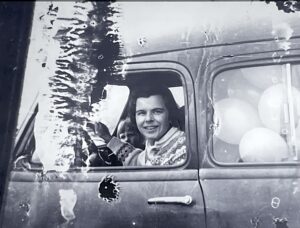
As Sloan recalled about their activist victory in the early 1960s, “to have a group of citizens win out over a major institution was really pretty unique. … Bodega was a very important story at the very beginning of a huge cultural shift for not only environmental matters on nuclear energy, but in so many other ways, too. Basically, citizen involvement at every level, from students to housewives. And to be a part of that, I look back on that and think, wow, how could anybody have been so lucky in so many ways?” The story of this citizen-led anti-nuclear activism has been told elsewhere, including in Oral History Center interviews with David Pesonen and Joel Hedgpeth, as well as by nuclear historians J. Samuel Walker and UC Berkeley alumnus Thomas Wellock. Sloan’s storytelling on her personal role in the “Battle of Bodega Head”—like launching over a thousand helium-filled balloons from Bodega Head to the accompaniment of live jazz playing “Blues Over Bodega”—adds both flourish and important details to the eventual successes of NCAPBHH.
Sloan’s involvement at Bodega Head played a crucial role in launching the next phase of her life as a geologist and teacher. After moving with her children to Berkeley in 1963, Sloan worked for the Friends Committee on Legislation, a Quaker lobbying group. Yet, by the early 1970s, Sloan’s long-standing fascination of nature, a desire to experience more of it, and her memory of discovering fault seams on Bodega Head led her to take UC Extension courses on geology taught high up in the Sierra Nevada’s Emigrant Wilderness by a remarkable UC Berkeley professor named Clyde Wahrhaftig. Wahrhaftig eventually became a significant mentor and friend to Sloan on her academic journey, as were UC Berkeley geologists Garniss Curtis and William B.N. (Bill) Berry. In her oral history, Sloan shares many joys from her field research and academic experiences at Berkeley, including mapping rock formations in California’s Mazourka Canyon, communing with ancient bristlecone pines in the White Mountains, learning about limestone deposition in Florida, a fascinating question about an imaginary dinosaur civilization from Walter Alvarez during her PhD oral examination, and her own work deciphering the sedimentary mysteries of fossils from mud under the San Francisco Bay. Sloan also shared some of the challenges she faced in the late 1970s as one of the few women in Berkeley’s geology and paleontology departments that, by her account, then included more than a few male chauvinistic dinosaurs.
Video clip from Doris Sloan’s oral history about Clyde Wahrhaftig, a UC Berkeley geologist, mentor, and friend:
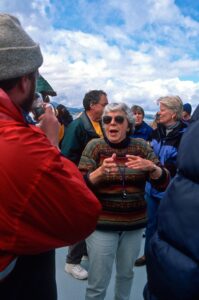
Sloan’s oral history also explores her ensuing years as a teacher, travel guide, author, and environmental activist. Sloan discussed several senior research seminars in Environmental Studies that she taught at UC Berkeley, some records of which are preserved in UC Berkeley’s Library including East Bay Parklands: Planning and Management (1978), Seismic Safety in Berkeley (1979), San Pablo Bay: An Environmental Perspective (1980), and Hazardous Substances: A Community Perspective (1984). Sloan recorded stories and samples from lectures she delivered in her UC Extension geology courses and in her field classes for numerous organizations, including the Oakland Museum, Sierra Club, the Point Reyes National Seashore Association, and the Yosemite Association. And she shared some of her travel experiences as a guide for Cal Alumni groups on journeys all across the Earth, from the Himalayas to Central Asia, and from South America to Scandinavia. Sloan also spoke about her local environmental activism as a board member of Save The Bay, as a founding member of Citizens for East Shore Parks, and on her friendship with Save The Bay co-founder Sylvia McLaughlin, including efforts to secure what is now named as McLaughlin Eastshore State Park.
Doris Sloan’s enlightening oral history records marvelous stories from the first ninety-two years of her remarkable life—from fleeing Nazi Germany to summers in Woods Hole; from raising children in northern California to stopping construction of a nuclear power plant on the San Andreas fault; from graduate school in her forties at UC Berkeley to lecturing across California and much of the world. I am honored to have become one of Doris’s friends, and I’m lucky for the opportunity to become one of her students. Now, with the publication of Doris Sloan’s oral history, you also have the chance to learn from her deep wisdom and experience.
Video clip from Doris Sloan’s oral history about the Bay Area’s complicated geology:
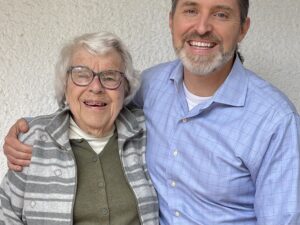
ABOUT THE ORAL HISTORY CENTER
The Oral History Center of The Bancroft Library preserves voices of people from all walks of life, with varying political perspectives, national origins, and ethnic backgrounds. We are committed to open access and our oral histories and interpretive materials are available online at no cost to scholars and the public. You can find our oral histories from the search feature on our home page. Search by name, keyword, and several other criteria. Sign up for our monthly newsletter featuring think pieces, new releases, podcasts, Q&As, and everything oral history. Access the most recent articles from our home page or go straight to our blog home.
Ishiuchi Miyako Photobooks From Richard Sun Donation
Come see the photography books of Ishiuchi Miyako on display in the Art History/ Classics Library. Follow the link to read a brief biography of the artist from the SFMOMA website. These books are part of Richard Sun’s generous donation of photography books. Click the links below to view their records in UC Library Search.
Grain and Image Hasselblad Award Moving Away Endless Night Yokosuka Story
Celebrate Earth Week with Art/Ecology Texts Online
Here are some featured e-Resources from the Art & Architecture ePortal. Click the titles below to view them on the portal.
|
Highlights from the Natural Resources, Land Use, and Environment Oral History Project
By Ricky J. Noel
U.S. Forest Service, California Water History, and Horticulturalists in the Natural Resources, Land Use, and Environment Oral History Project
The UC Berkeley Oral History Center has a large collection of oral histories documenting the history of natural resources, land use and the environment within California and worldwide. The oral histories in the subject area record the experiences and reflections of individuals who have participated in some of the most impactful organizations within this field, such as the United States Forest Service, the East Bay Regional Park District. Additionally, this collection contains interviews detailing the history of the California wine industry, California water wars, forestry, and horticulture within the United States and abroad.
Forestry
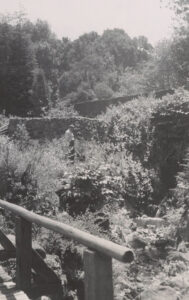
One of the highlights in this expansive and broad collection includes several interviews with individuals from the early days of the United States Forest Service. The interviews detailing the history of forestry could be very useful to someone who wants to trace the evolution of the forestry industry. In addition, if one is working on something involving University of California history or the history of the U.S. Forest Service, particularly in the first half of the twentieth century, these interviews, among the many others present in the collection, would be an invaluable resource for that research.
My personal recommendations for this area would be an interview with Emanuel Fritz, who was a very early practitioner of the forestry field in the United States. He attended Yale School of Forestry and eventually made his way to the University of California in the 1920s, where he became involved with redwoods and assisted the U.S. Forest Service with their second-growth investigation along with other projects of that nature. He also discusses his political experience, particularly his involvement with the California Forest Practice Act of 1945 and his work as a consultant for the Legislative Forest Study Committee in 1944. Another recommendation would be our interview with Edward Kotok who was a researcher for the U.S. Forest Service as well as the assistant chief in charge of state and private forestry work. Some of the highlights of his interview involve him discussing his role as the assistant chief, relationships with Congress, ties between American and European forestry, arguing against the transfer of the U.S. Forest Service to the Department of the Interior, and helping to keep forestry at UC Berkeley.
Water
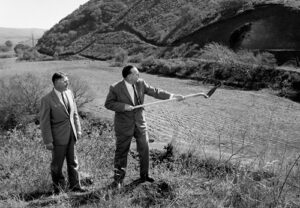
Another incredibly useful and relevant resource in this collection has to do with the history of the struggle over California’s water. Anyone interested or researching the history of California, the impact of the Los Angeles Aqueduct on the Lone Pine region, the California Water Project, irrigation, the United States government’s involvement with water in California and the evolution of the California Water Wars would do well to check out some of these interviews in this collection. Some of the ones I find most interesting and useful would be an interview with Frank Adams, a irrigation specialist who was the author of Bulletin 21, Irrigation Districts in California but also was part of the investigations into the irrigation of California from 1910 to 1924 and was involved in the redrafting of the Soil Conservation Act and the Central Valley Project. In regards to the California Water Project (1955–1961) there is an interview with a key developer of the project, Harvey O. Banks, who reflects on the development and financing of this endeavor, as well as his term as director of the California Division of Water Resources and his work on water-related legislation, such as the Davis-Grunsky, Burns-Porter and San Luis acts.
Horticulture
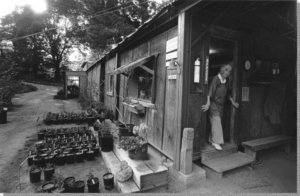
A unique aspect of this collection involves the interviews with horticulturalists. While these interviews might at first glance seem a bit niche in their focus, they offer valuable insights into small businesses in California, horticulture in California in the mid century, California regional history, and the development of plant societies such as the UC Berkeley Botanical Gardens. Interviews that stand out to me in this collection include Edward Carman who ran Ed and Jean Carman’s nursery beginning in 1946 and was an active member of the Los Gatos community, Wayne Roderick, a senior nurseryman for the UC Berkeley Botanical Garden from 1960 to 1976 and Gerda Isenberg, a humanitarian and owner of the Yerba Buena Nursery.
These interviews are among the many that are excellent resources for researchers looking to understand more about the environment, particularly the environment in its relation to conservation groups, water, and education. The Oral History Center’s Natural Resources, Land Use and the Environment – Individual Interviews is a collection of roughly a hundred interviews ranging from oral histories regarding the Sierra Club, United States Forest Service, California Wine Production, California Water Rights and the East Bay Regional Parks District, among many other unique, insightful personal commentaries that give insight into some of the most important aspects of the environment in the United States and abroad.
Find these interviews and all our oral histories from the search feature on our home page. You can search by name, keyword, and several other criteria.
Ricky J. Noel is a recent graduate of UC Berkeley, with a major in history with a Latin American concentration. During his time at Berkeley, Ricky worked with the Oral History Center as an editorial assistant.
Related Resources from The Bancroft Library
“Newton Bishop Drury and the Legacy of the Save the Redwoods League” by Deborah Qu.
Gerda Isenberg papers, 1931-1990. Consists of correspondence, writings, speeches, reports, interviews, subject files, clippings, a scrapbook, photographs and ephemera. BANC MSS 94/210 c.
Harvey O. Banks. Federal-state relations and the California water plan. Bancroft ; 1956?? ; F862.25.I49.
Emanuel Fritz papers, circa 1900-1988. BANC MSS C-B 728.
Forestry photographs from the Emanuel Fritz papers. BANC PIC 1987.057–PIC.
About the Oral History Center
The Oral History Center of The Bancroft Library preserves voices of people from all walks of life, with varying political perspectives, national origins, and ethnic backgrounds. We are committed to open access and our oral histories and interpretive materials are available online at no cost to scholars and the public. You can find our oral histories from the search feature on our home page. Search by name, keyword, and several other criteria. Sign up for our monthly newsletter featuring think pieces, new releases, podcasts, Q&As, and everything oral history. Access the most recent articles from our home page or go straight to our blog home.
Hon. Kevin Murray: California State Assembly (1994-1998) and California State Senate (1998-2006), oral history release
New oral history: Hon. Kevin Murray
Video clip from Kevin Murray’s oral history about his political role models and becoming more a legislator than a politician:
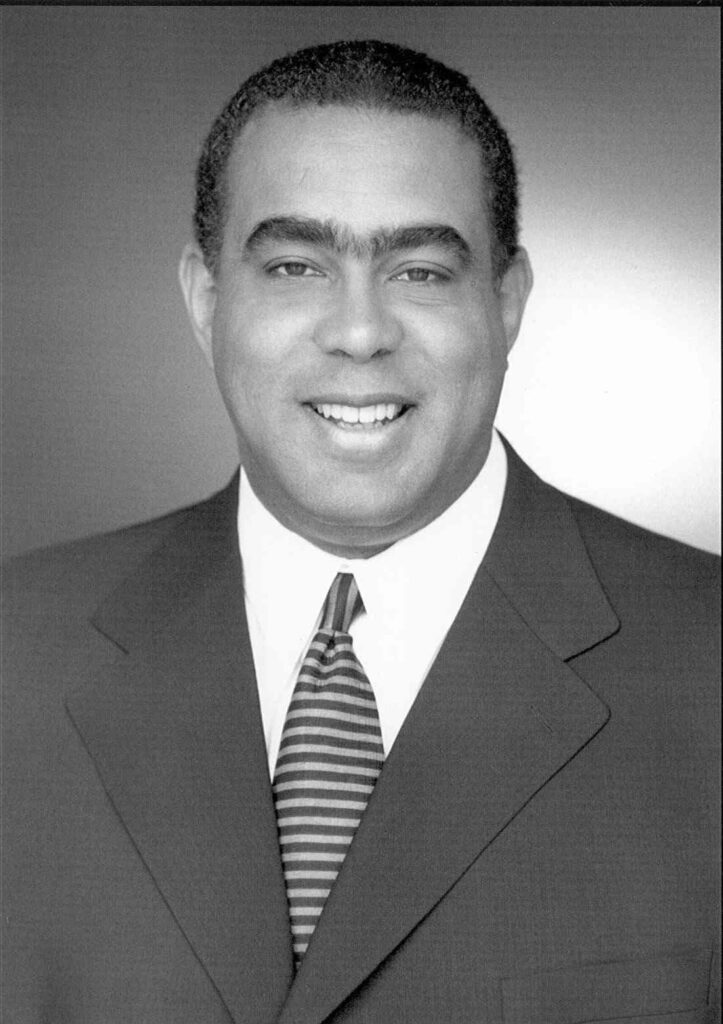
Kevin Murray represented regions of Los Angeles as a member of the Democratic party in the California State Assembly (1994-1998) and in the California State Senate (1998-2006), until he retired due to term limits. Murray and I recorded over five hours of interviews about his life and career in May 2021 as part of the Oral History Center‘s contributions to the California State Government Oral History Program. Murray’s oral history reveals ways he capitalized on opportunities as they arose throughout his life. In the process, he became an influential leader in the California Legislature, including as chair of the state’s Democratic Caucus and the California Legislative Black Caucus.
Many of Kevin Murray’s life stories reflect a kind of American dream narrative for Black middle-class families in Los Angeles. Murray was born in the spring of 1960 in the westside community of View Park, where he still lives and now raises his own family. Both of Murray’s parents graduated from college, and around the time of his birth, Murray’s father transitioned from work as an aerospace engineer to working in Los Angeles city politics and eventually in state politics. Around that time, their View Park neighborhood experienced white flight, which according to Murray resulted with an influx of middle and upper-middle class Black families of doctors, lawyers, dentists, and political figures who became his role models. At his parents’ insistence, Murray attended elite Los Angeles middle and high schools. During college, while earning a Bachelor of Science in Business Administration from California State University, Northridge, Murray began booking music and entertainment acts on campus. After graduating in 1981, Murray’s college entertainment experiences led to him start work in the infamous mail room at the William Morris Agency in Beverly Hills. While working at William Morris, Murray earned a Master’s in Business Administration from Loyola Marymount University in 1983, and in 1987, he earned a Juris Doctor from Loyola Law School. Prior to his political career, Murray provided consulting and management services to artists in the entertainment industry while also practicing law in the areas of entertainment, real estate, insurance, and dependency.
Due to his father’s work in L.A. politics, Murray recalled as a child attending barbecues and breakfasts at the homes of legends in California politics like Big Daddy Jesse Unruh and Black political leaders like Mervyn Dymally, Julian Dixon, and Tom Bradley. From his young exposure to powerful politicians, Murray learned they were simply people, not intimidating icons. Eventually, Murray came to believe, rightfully, that he, too, could become a political leader. When an opportunity to run for the California Assembly arose in the early 1990s, Murray seized that chance and won his first election to the California Assembly in 1994. His father was, by then, also serving in the Assembly, which made them the first-ever California Assemblymembers to serve as father and son.
Video clip from Kevin Murray’s oral history about California’s North-South power politics:
Murray described himself as more of a legislator than a politician. In the Assembly, Murray worked with Speaker Willie Brown and quickly became a leader who, over the next twelve years, served in both the California Assembly and Senate. Murray was elected as a Democratic member of the California State Assembly from the 47th District in Los Angeles from 1994-1998, where served as Chair of the Transportation Committee. In the California State Senate from 1998 to 2006, Murray represented the 26th District based in Culver City, California, and served as chair of the influential Appropriations Committee, the Transportation Committee, the Democratic Caucus, and the California Legislative Black Caucus. Murray also served on the California Film Commission.
Most of Murray’s oral history explored his years of political work in Sacramento where he passed numerous bills, including one of the nation’s first laws on identity theft (AB 157, the Consumer Protection: Identity Theft Act); bills on “Driving while Black”; education bills to address the digital divide and ensure California students had access to the internet (then called “the information superhighway”); bills protecting victims of domestic violence; a bill protecting houses of worship from hate crimes; and many others, including a bill eventually vetoed by Governor Pete Wilson that would have enabled Californians to register to vote online, to sign a petition online, and to vote via the internet as early as 1997.
While Murray’s oral history details his legislative efforts, he also reflected broadly on a variety of topics, including key differences between the California Assembly and Senate; on influential committee assignments; on intra-caucus relationships between the Black Caucus, Latino Caucus, API Caucus, and the Women’s Caucus; on North-South power politics in California; on his distaste for term limits and the importance of legislative staff; and on his political role models. Murray concluded his oral history with brief a discussion of his post-legislative life in Los Angeles with his wife and their two children, including reflections on the 2008 election of Barack Obama and the Black Lives Matter marches of 2020.
Video clip from Kevin Murray’s oral history about intra-caucus relationships in the California Legislature:
About the California State Government Oral History Program
Kevin Murray’s oral history was conducted in collaboration with of the California State Government Oral History Program, which was created in 1985 with the passage of AB 2105. Charged with preserving the state’s executive and legislative history, this state Program conducts oral history interviews with individuals who played significant roles in California state government, including members of the legislature and constitutional officers, agency and department heads, and others involved in shaping public policy. The State Archives oversees and directs the Program’s operation, with interviewees selected by an advisory council and the interviews conducted by university-based oral history programs. Over the decades, this collective effort has resulted in hundreds of oral history interviews that document the history of the state’s executive and legislative branches, and enhance our understanding of public policy in California. The recordings and finished transcripts of these interviews are housed at the State Archives. Additionally, Kevin Murray’s oral history is available online in the Berkeley Library Digital Collections.
About the Oral History Center
The Oral History Center of The Bancroft Library preserves voices of people from all walks of life, with varying political perspectives, national origins, and ethnic backgrounds. We are committed to open access and our oral histories and interpretive materials are available online at no cost to scholars and the public. You can find our oral histories from the search feature on our home page. Search by name, keyword, and several other criteria. Sign up for our monthly newsletter featuring think pieces, new releases, podcasts, Q&As, and everything oral history. Access the most recent articles from our home page or go straight to our blog home.
Video clip from Kevin Murray’s oral history about California Senate and Assembly differences and good committees:
Video clip from Kevin Murray’s oral history about term limits for California legislators and the role of legislative staff:
Four Notes on our Love of Books and our Need for Libraries
Four Notes on our Love of Books and our Need for Libraries
by Henrike Christiane Lange, Associate Professor of History of Art and Italian Studies, University of California, Berkeley
UC Berkeley, Spring Term 2023

A Note on Historical Books
The historical books in our collection are honeycombs of the centuries. They provide us not just with their specific knowledge from other times, but also with new insights about our own historical situation that we can only fully appreciate when seeing it compared to other eras. The material presence of historical books offers a shared experience with earlier readers – the readers of their time. Finally, the very awareness of the books’ own different time and place of origin generates a friction which allows us to progress with better consciousness and determination in our own timelines – not to be free-floating and lost in space, without time and context. The library thusly can both anchor us and liberate us at the same time in this process of discovery. Finally, a library of such historical objects for teaching and training is more than the sum total of the books. It is the select and familiar presence of those books together in an organized space, carved out of the chaos of the rest of the world as a refuge for the calm immersion into the records of others’ long-gone thoughts that spark the magic of understanding.
A Note on Scholarly Monographs
Monographs are little time machines: In a matter of hours, one can walk with the author through a specific and manageable field of knowledge, acquired over years, condensed yet decompressed, presented in a reader-friendly way, and focused on a valuable question. A monograph is not as short and shallow as a blog post, and it is not as limitless and infinite (therefore ungraspable) as the whole wide virtual cosmos of the world wide web. In a scholarly monograph, an author explores at the speed of the reader’s reading time what they have learned from having done years and decades of work of researching, reading, sorting, evaluating, weighing, expressing, writing, re-writing, and editing under the harsh conditions of double-blind peer review. This model can help enable readers and researchers to produce, eventually, their own unique contribution to a field in the form of a book – sent into the world to find its readers, way beyond the personal sphere of its author. The department library is the space to encounter and compare these kinds of books (at the height of their training, graduate students are expected to read up to a dozen of monographs per week in order to grasp their different styles, approaches, rhetoric, and strategies of presentation of the material).
A Note on Art History Libraries
Art history libraries have a double importance for the discipline, as they contain both secondary and primary sources: Books in art history research are not only containers of written, textual knowledge, or simple records of visual material, but also often serve as primary materials when they contain large or unique plates, a corpus of drawings, of maps, or of prints. They provide core materials such as large folio-sized works that outdo our screens, or plates that we use for comparisons in teaching around the table. Art History Libraries such as ours in Doe Library hold original documents that are themselves primary sources also when it comes to photo books and artist books, and the library’s rooms filled with books are our equivalent of a “lab” space. Large prints, maps, and photos need to be spread out on folio-size accommodating tables and compared, arranged, discussed with small groups in our training of emerging experts in our fields. The access to these physical materials together with small groups of students in a dedicated library space is an irreplaceable feature of the training of future architects and art historians. As is true for all our campus libraries, such specialized department libraries are not only collections somewhere without roots in time and space, but carefully grown, cultivated, specific places that have been assembled only here for a likewise growing and developing student population according to their specific needs.
A Note on Berkeley’s Libraries in the Now-Moment
Entering someone’s personal research library, fascinatingly, can feel like entering someone else’s brain – and to move about as if in a silent conversation with them, following their lead or jumping between sections and fields of knowledge, seeing the surprising and original connections that someone else made a long time ago, and getting inspired. The same applies to the experience of wonder and discovery in the large departmental, field-specific library: when we enter our library, we truly enter the good will, deep knowledge, and great care that generations of librarians, faculty, staff, and students have left there in invisible traces – in the objects as much as in the coherence, distribution, arrangement, and context of the objects. This is why off-campus storage removes the most important component from research, teaching, and learning; the eureka moments that can only happen on the quiet days alone in the library. We sometimes forget that not only the books and their authors speak to us, but all the caretakers and champions of the books that helped them find their way into our collection. As disciplines in the arts and humanities in a worldwide context that is hostile to the slow, deep, focused, and truly generative conditions of our work, we need those moments more than ever – not just the researchers, but especially our brilliant, insightful students.
